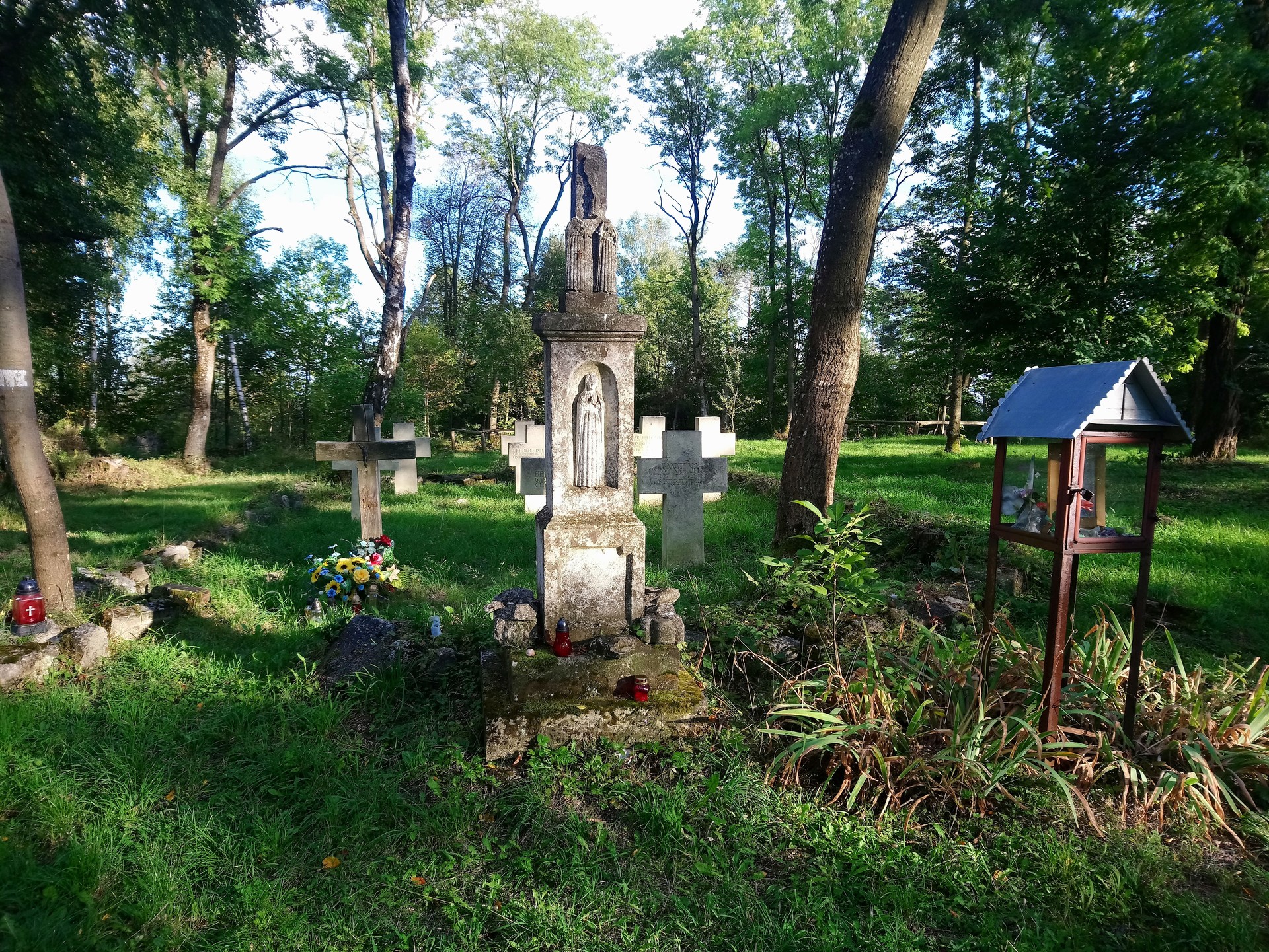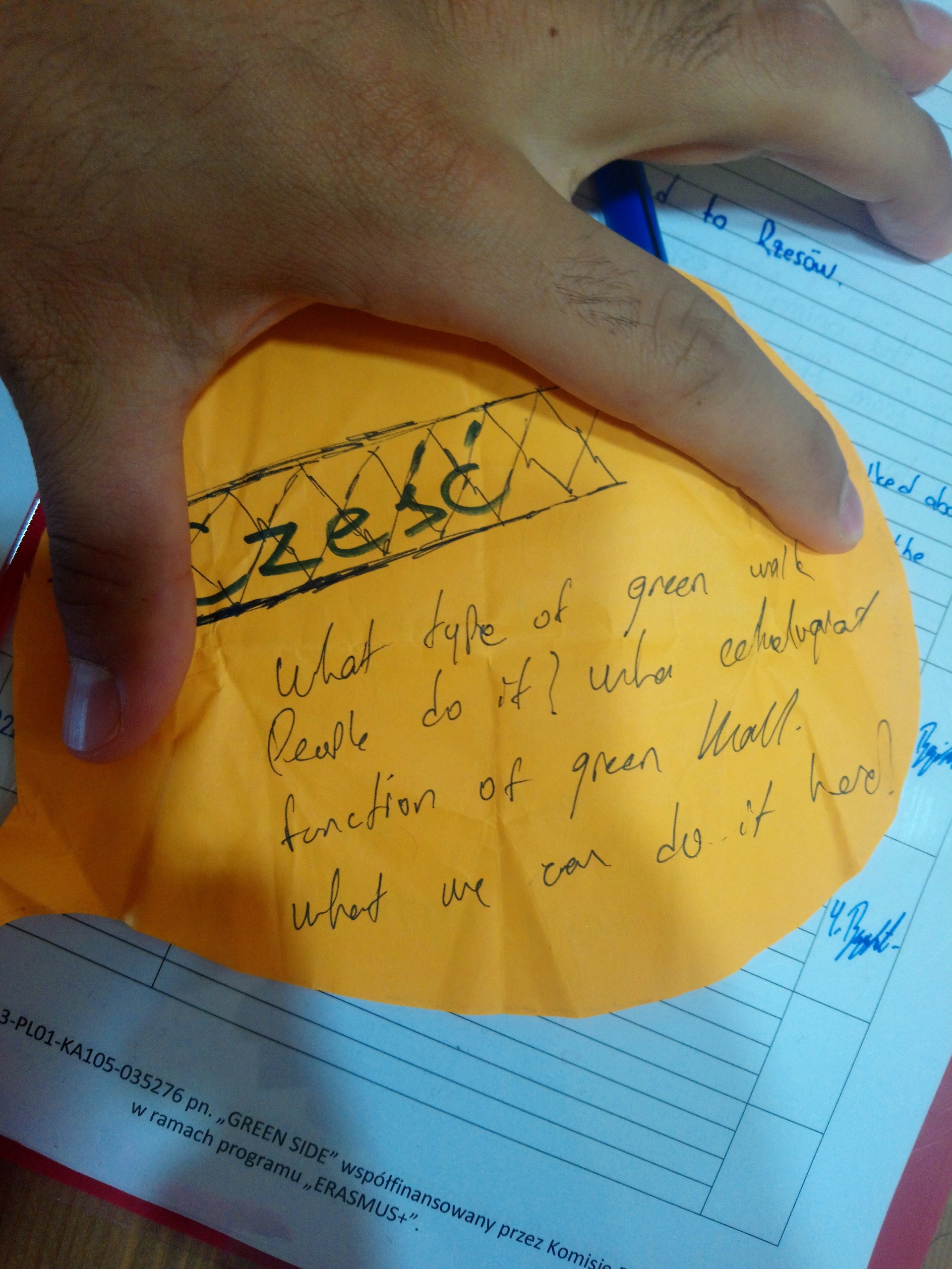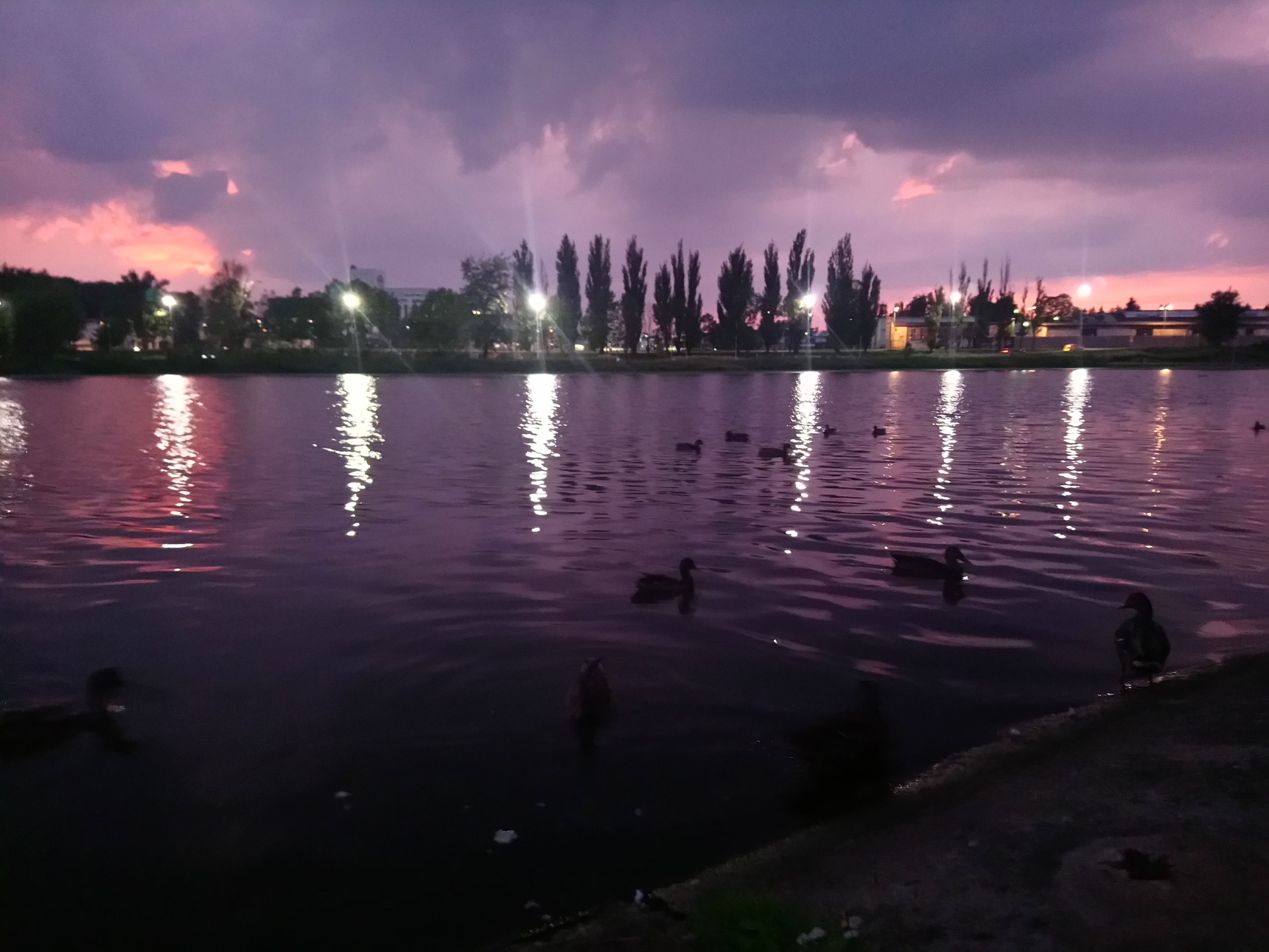Polish speaking guide 19
Pasażer:Dzień dobry, proszę na lotnisko.
Kierowca:Dzień dobry. Bardzo proszę.
Pasażer:Czy to jest daleko?
Kierowca:Nie, to jest około 7 kilometrów stąd.
Pasażer:Czy jest korek?
Kierowca:Nie, teraz nie ma.
Pasażer:To bardzo dobrze. Proszę jechać szybko. Niedługo mam samolot. Czy pan wie, jak nazywa się lotnisko w Warszawie?
Kierowca:Tak, lotnisko Fryderyka Chopina.
Pasażer:Dziękuję za informację.
Gość:Przepraszam, gdzie jest toaleta?
Kelner:Tam. Proszę iść prosto, a później skręcić w prawo.
Gość:Dziękuję.
Kelner:Proszę.
In Polish, there are 4 main types of verb conjugation. In all of them, the 1st and 2nd person plurals are created by adding ending -my and -cie respectively to the form of the 3rd person singulars. The 3rd person plural always take the ending -ą or -ją. However, please remember that there is a vast group of irregular verbs and that the described classification is a simplification.
Conjugation number 1 (with the singular endings: -ę, -esz, -e)
includes verbs with the characteristic infinitive ending -ować, e.g.: pracować (to work), studiować (to study), podróżować (to travel), interesować się (to be interested) and kupować (to buy). In all of these verbs, in both the singular and plural forms, the core -ow- is replaced with -uj-: pracuję, studiuję, podróżuję; pracujemy, studiujemy, podróżujemy.
The same conjugation applies to the verbs iść, jechać, chcieć (to want), pić (to drink), pisać(to write), móc (to be able), myć się (to wash oneself) and wstawać (to get up). However, note the change in the core, e.g.: pisać – piszę (-sz in all forms) móc – mogę – możesz (-g- in the 1st person singular and 3rd person plural; -ż- in all remaining forms), iść – idę – idziesz (-d- in the 1st person singular and 3rd person plural; -dzi- in all remaining forms).
Conjugations number 2 (with the singular endings: –ę, -isz/-ysz, -y/-i)
applies to verbs such as chodzić (to walk), robić (to do), myśleć (to think), lubić (to like), płacić (to pay), woleć (to prefer), musieć (to have to), uczyć się (to learn) and mówić (to speak).
Conjugation number 3 (with the singular endings: –am, -asz, -a/the so-called ‘no ending’) applies to verbs such as nazywać się, mieć, grać (to play), pływać (to swim), czytać (to read), oglądać (to watch), rozmawiać (to talk), spotykać się (to meet), umawiać się (to make an appointment), słuchać (to listen), znać (to know) and odpoczywać (to rest).
Conjugation number 4 (with the singular endings: -em, -esz, -e)
applies to verbs such as wiedzieć, rozumieć (to understand), umieć (to be able/can) and jeść(to eat).
Tu jest ulica Ekologiczna. Ten wysoki blok to mój dom. Mieszkam bardzo blisko centrum. Tamten niski budynek to bank. Obok jest poczta, a na przeciwko mój ulubiony mały sklep. Na prawo jest duży piękny park, na lewo jest szkoła, a tam metro.
The expressions na lewo (on the left), na prawo (on the right), obok (next to), naprzeciwko(opposite, across the street), blisko (close), daleko (far) are adverbs of location and answer the question gdzie? (where?). This question can also be answered by using the demonstrative pronouns tu (here) and tam, (there).
The pronouns ten, ta and to (this for masculine, feminine and neuter respectively) are used to identify an object located close to the speaker. For objects located further away pronouns tamten, tamta and tamto (that for masculine, feminine and neuter respectively) should be used.
The verb podobać się plus a pronoun in the dative case
The verb podobać się (to appeal) is used to refer to people, things and places which make a positive aesthetic impression on the speaker. In contrast to the verbs lubić and kochać, these do not necessarily evoke emotions, but they relate to the subjective opinion of the speaker, e.g.:
Podoba mi się ten obraz, bo ma piękne kolory. – This picture appeals to me, because it has beautiful colours.
Podoba mi się ten mężczyzna, bo jest przystojny. – This man appeals to me, because he is handsome.
The verb podoba się goes with the dative. It answers the questions: Kto się komu podoba?(Who appeals to whom?) and Co się komu podoba? (What appeals to whom?).
Grupa – Turystyka
Piotr:Zapraszam do promocji regionów. Ja polecam Mazury. Nawiążę kontakt z osobami, które zajmują się turystyką. Szukam pośredników. Jestem właścicielem pensjonatu.
Magda:Jestem z polskiej stolicy turystyki, Kazimierza Dolnego. Zapraszam na festiwal filmów, chociaż wiadomo, że wtedy jest dużo turystów.
Jola:A ja myślałam, że stolica turystyki to Kraków. Zapraszam na wydarzenia kulturalne w Krakowie. Tu zawsze coś się dzieje.
Andrzej:Miałem okazję być w Egipcie na wyprawie archeologicznej jako fotograf dokumentalista. To było fascynujące.Jola:Andrzej, zazdroszczę Ci. Nie byłam w Afryce, ale znam każdy zakątek Polski. Mój ulubiony to Bieszczady.
Anna:Dodam swoje trzy grosze. Najpiękniejszy region to okolice Gdańska. Stąd pochodzę. Jednym słowem, zapraszam nad morze.
dodać v perf. swoje trzy groszeto put in one's two pennies worth
literally : to put in one's three groszes
jednym słowemin a word
mieć okazjęto have the opportunity
nawiązać v perf. kontaktto establish contact
Stąd pochodzę.I come from here.
Tu zawsze coś się dzieje.There's always something happening here.
Wiadomo, że...It’s obvious that…,
It’s common knowledge that…
The genitive of plural nouns functioning as adverbials of place
A genitive form functioning as an adverbial of place answers the questions: Skąd jesteś?(Where are you from?) and Skąd pochodzisz? (Where do you come from?). Some names of countries, towns and regions appear in the plural and take forms without genitive endings, e.g.: z Filipin (from the Philippines), z Alp (from the Alps), z Tatr (from the Tatra Mountains), z Niemiec (from Germany), z Węgier (from Hungary). Sometimes the genitive ending –ów is used, e.g. ze Stanów (from the USA) and z Karaibów (from the Carribean).
Verb aspect
Verbs can appear in two aspects: perfect and imperfect (see: Polski Bez problemu! 1, Lesson 9). The perfect aspect refers to a complete, one-time activity or one which is to take place. The imperfect aspect refers to an action in progress or the one which happens on a regular basis. Perfect verbs cannot be used in the present tense.
One way of creating an aspect pair of verbs is to add a prefix to the imperfect form, e.g.: robić - zrobić, dziękować - podziękować, pisać - napisać and czytać - przeczytać. The most often used prefixes are: z-, na-, po-, prze-.
A different group of aspect pairs consists of pairs of verbs with alternated vowels, e.g. o : a as in zarobić - zarabiać and zaprosić - zapraszać.
Verb aspect - examples:
Chciałbym zaprosić sąsiadów. (I would like to invite the neighbours.) – perfect form; suggests a definite intention;
Jak często zapraszacie gości? (How often do you invite guests?) – imperfect form; refers to frequency;
Kiedy zadzwonisz do matki? (When will you call your mother?) – perfect form; refers to a one-time conversation which is expected to take place;
Ile razy dziennie dzwonisz do kolegi? (How many times a day do you call your friend?) – imperfect form; suggests a repeated action.
The perfect aspects of verbs are often created irregularly, therefore dictionaries give both forms.
Indefinite pronouns
The indefinite pronouns are: ktoś (somebody), coś (something), kiedyś (sometime) and gdzieś (somewhere) and they refer, respectively, to a person, thing, time and place which is unknown to the speaker, e.g.:
Ktoś mi powiedział (nie wiem kto) kiedyś (nie wiem kiedy), że gdzieś (nie wiem gdzie) w Warszawie można spotkać znanych aktorów. – Somebody told me (I don’t know who) sometime (I don’t know when), that somewhere (I don’t know where) in Warsaw one can meet famous actors.
Indefinite pronouns remain the same in affirmative, interrogative and negative sentences.
Czy ktoś, kiedyś, gdzieś poznał Olę, Jana, Karola i Alę?
Ola-Jest informatykiem, pisze programy komputerowe. W swoim zawodzie jest rodzynkiem, ponieważ to raczej męska profesja.
Jan-Zajmuje się projektowaniem wnętrz. To ciekawy zawód.
Karol-Projektuje mosty, ale ma mało pracy. Wiadomo, że w Polsce powstaje mało mostów.
Ala-Pracuje w liceum. Uczy angielskiego i prowadzi zajęcia teatralne.
Complex sentences
Compound sentences such as Dobrze, że… (It’s good that…) or Wiadomo, że… (It’s obvious that…) are subject complex sentences. The first part of the sentence is general, while the second part answers the question who? or what?. The second part specifies and develops the information, e.g.:
Dobrze, że Iza jest trenerem.
Wiadomo, że Polska jest w centrum Europy.
The inflection of positive, comparative and superlative adjectives in the singular - part 1
Adjectives are inflected in all their forms of comparison. They retain their endings from their positive degrees.
The masculine gender can take two forms of the accusative:
1) the masculine animate form – for people and animals e.g. zdrowego człowieka;
2) the masculine inanimate form – for things e.g. stary dom.
For animate nouns, the accusative is the same as the genitive, whereas for inanimate nouns it is the same as the nominative.
The inflection of positive, comparative and superlative adjectives in the singular - part 2
MASCULINE
masculinePositive
(stopień równy)Comparative
(stopień wyższy)Superlative
(stopień najwyższy)nominativezdrowy człowiek,
stary domzdrowszy
starszynajzdrowszy
najstarszygenitivezdrowego człowieka,
starego domuzdrowszego
starszegonajzdrowszego
najstarszegodativezdrowemu człowiekowi,
staremu domowizdrowszemu
starszemunajzdrowszemu
najstarszemuaccusativezdrowego człowieka,
stary domzdrowszego człowieka,
starszy domnajzdrowszego
człowieka,
najstarszy dominstrumentalzdrowym człowiekiem,
starym domemzdrowszym
starszymnajzdrowszym
najstarszymlocativeo zdrowym człowieku,
o starym domuo zdrowszym
o starszymo najzdrowszym
o najstarszym
The inflection of positive, comparative and superlative adjectives in the singular - part 3
NEUTER
The adjective forms for the neuter gender are different from those for the masculine gender in the nominative and accusative. In these two cases they are as follows: zdrowe dziecko, nowe kino. In the remaining cases they are identical to the masculine forms.
The inflection of positive, comparative and superlative adjectives in the singular -
Portal „Ciekawi ludzie”
Grupa - Kreatywni
Magda:Jestem początkującą reporterką. Zaczęłam pracę w radiu. Szukam ciekawych tematów - zawsze i wszędzie. Mam nosa do niebanalnych ludzi i mam nadzieję, że tu ich spotkam.
Piotr:Witam. Pochodzę z Mazur i mam smykałkę do interesów. Utrzymuję się z turystyki. Szukam projektanta stron internetowych i pomysłów na promocję pensjonatu.
Andrzej:Interesuję się fotografią. Możecie mi polecić strony www z ciekawymi fotkami?
Anna:Cześć, jestem fotografem. Zapraszam na moją stronę internetową: www.studiofotoanna.pl
Andrzej:Anno, robisz niezwykłe zdjęcia. Bardzo mi się podobają. Mój znajomy jest znanym fotografem i też je chwali.
Anna:Dzięki.Piotr:Aniu, jeśli potrzebujesz ładnego pleneru, zapraszam na Mazury.
Paweł:Witam. Przygotowuję scenariusze spotkań biznesowych.
Expressions such as:
Europa Środkowo-Wschodnia / Środkowowschodnia
In the case of such names, spelt here with a capital letter at the beginning (name of a region), the second element consists of the adjectives środkowy and wschodni, connected by the interfix o. The hyphen indicates that the meaning of both elements of the compound is equal, and carries a different sense than the expression Europa Środkowowschodnia. In the former a hyphen replaces the conjunction i, which means that we are referring to the countries of Central, as well as Eastern Europe. However, the spelling without the hyphen denotes the countries situated in the central part of Eastern Europe.
The same rules apply to other adjectival compounds, e.g.czerwono-czarny, biało-czerwony (composed of two colours) butszaroniebieski (blue with a hint of grey), jasnozielony. In case of compound adjectives it is important to remember that only the second element is inflected.
Synonymous expressions:
na północy i wschodzie (Polski),
w północno-wschodniej (Polsce)
When determining the geographical situation of a place, we can use two synonymous structures. The first, already known to the users of this self-study book, is composed of the preposition na and the nouns północ and wschód in the locative case. Proper names always appear in the genitive (e.g.na zachodzie Francji, na południu i wschodzie Rosji). In the other structure with identical meaning, it is necessary to use the preposition w and an adjective (or a compound adjective) in the locative, followed by a proper name, also in the locative (e.g.w zachodniej Francji, w południowo-wschodniej Rosji).
Compound adjectives such as
XIX-wieczny / dziewiętnastowieczny
Such compounds consist of an ordinal number (from 11 to 20) and the adjective wieczny, connected by the interfix o. They are synonymous with participial expressions, e.g.
pochodzący z jedenastego wieku,
zbudowany / założony w jedenastym wieku.
Administrative division
The administration of Poland is subdivided into three levels: province (województwo), county (powiat) and municipality (gmina). The names of administrative units are written in lower case:województwo małopolskie, powiat poznański, gmina Sandomierz (upper case here because it is a city name).
Regions
The names of Polish regions can be nouns (Mazowsze, Śląsk, Małopolska) or nouns with adjectives (Dolny Śląsk, Pomorze Zachodnie). They are spelt with upper case and inflected according to the appropriate pattern of nominal and adjectival declension. When answering the questions gdzie? and dokąd? they are used with the preposition na followed by the locative or the accusative case. The names of two central regions,Małopolska andWielkopolska, are exceptions – they are used with the preposition w followed by the locative and do followed by the genitive.
Gdzie mieszkasz?
- Na Mazowszu/Śląsku/Warmii/Mazurach (loc.)
- W Małopolsce/Wielkopolsce (loc.)
Dokąd się wybierasz?
- Na Mazowsze/Śląsk/Warmię/Mazury (acc.)
- Do Małopolski/Wielkopolski (gen.)
Kashubians and others
The names of national minorities, ethnic groups and residents of a region are upper case,
e.g.Ukraińcy, Kaszubi, Ślązacy.
The names of city residents are lower case,
e.g.wrocławianie, krakowianie, łodzianie.
Declension of place names such as
Zakopane, Bystre, Chyżne
Place names with the nominative form ending in –e and which inflect like adjectives take the inflectional ending –em in the instrumental and locative cases. The inflection pattern:
nom.Zakopane
gen.Zakopanego
dat.Zakopanemu
acc.Zakopane
instr.Zakopanem
loc.Zakopanem
Wrocław
Zabytkowe miasto na Nizinie Śląskiej nad rzeką Odrą; ze względu na swoje malownicze położenie nazywane jest często „drugą Wenecją”. Obok różnorodnych budowli z okresu średniowiecza, baroku i modernizmu warto zobaczyć Dzielnicę Czterech Wyznań, gdzie o wielokulturowych i wieloreligijnych tradycjach miasta przypominają sąsiadujące ze sobą świątynie: katolicka, protestancka, prawosławna i żydowska.
Łódź
Położona w centralnej Polsce Łódź pełna jest starych fabryk i eklektycznych pałaców. Tu na przełomie XIX i XX wieku rodziły się i upadały wielkie fortuny, co uwiecznili w swoich powieściach nobliści Władysław Reymont („Ziemia obiecana”) i Izrael Joszua Singer („Bracia Aszkenazy”). W latach swojej świetności Łódź była tyglem kultur i narodowości, o czym przypomina doroczny Festiwal Dialogu Czterech Kultur (polskiej, niemieckiej, rosyjskiej i żydowskiej). Dekadencki urok miasta fascynuje wielu artystów, w tym tak znanych jak reżyser David Lynch.
Sandomierz
Liczące 1000 lat miasto w województwie świętokrzyskim wyróżnia się przepięknym położeniem na siedmiu nadwiślańskich wzgórzach (stąd nazywane jest „małym Rzymem”). Urzeka niepowtarzalną atmosferą, rozmaitością widoków i zabytkową architekturą. Zwiedziwszy Sandomierz, warto wybrać się do pobliskiego Ujazdu, gdzie znajdują się najwspanialsze ruiny zamkowe w Polsce – Krzyżtopór.
Podlasie – mozaika kultur i narodowości
Najbardziej wielokulturowy i wieloetniczny region Polski, w którym żyją obok siebie Polacy, Białorusini, Ukraińcy i Tatarzy. Ci ostatni zamieszkują podlaskie wioski Bohoniki i Kruszyniany. Turyści przyjeżdżają tu, żeby obejrzeć zabytkowe drewniane meczety i mizary, czyli tatarskie cmentarze. Będąc na Podlasiu, nie wolno zapomnieć o odwiedzeniu Puszczy Białowieskiej, prastarego i unikatowego kompleksu leśnego, bogatego w rzadkie gatunki flory i fauny. Tylko tu można zobaczyć żyjące na wolności żubry.
Przełom Dunajca
Spływ Dunajcem przez Pieniny to niezapomniana przygoda i turystyczna atrakcja najwyższej klasy. Osiemnastokilometrowa trasa, którą turyści odbywają tradycyjnymi łodziami flisackimi, prowadzi przez najbardziej malownicze zakątki Pienińskiego Parku Narodowego. Przy ładnej pogodzie podróż dostarcza widoków, które dosłownie zapierają dech w piersiach.




Photo gallery
Want to have your own Erasmus blog?
If you are experiencing living abroad, you're an avid traveller or want to promote the city where you live... create your own blog and share your adventures!
I want to create my Erasmus blog! →








Comments (0 comments)